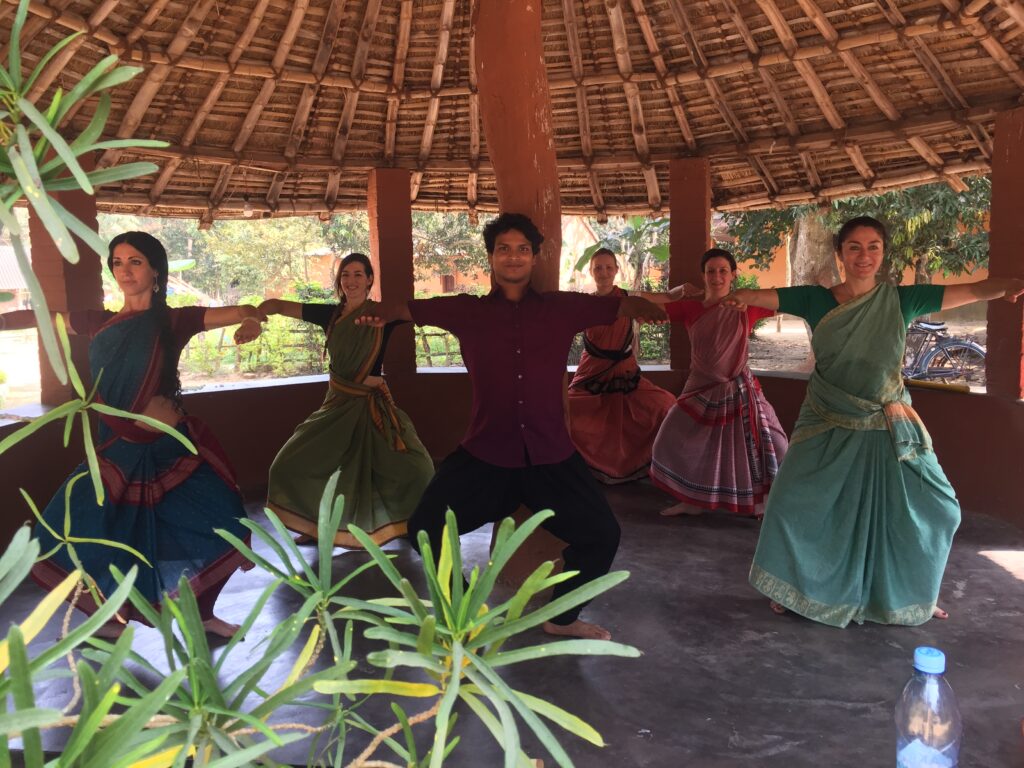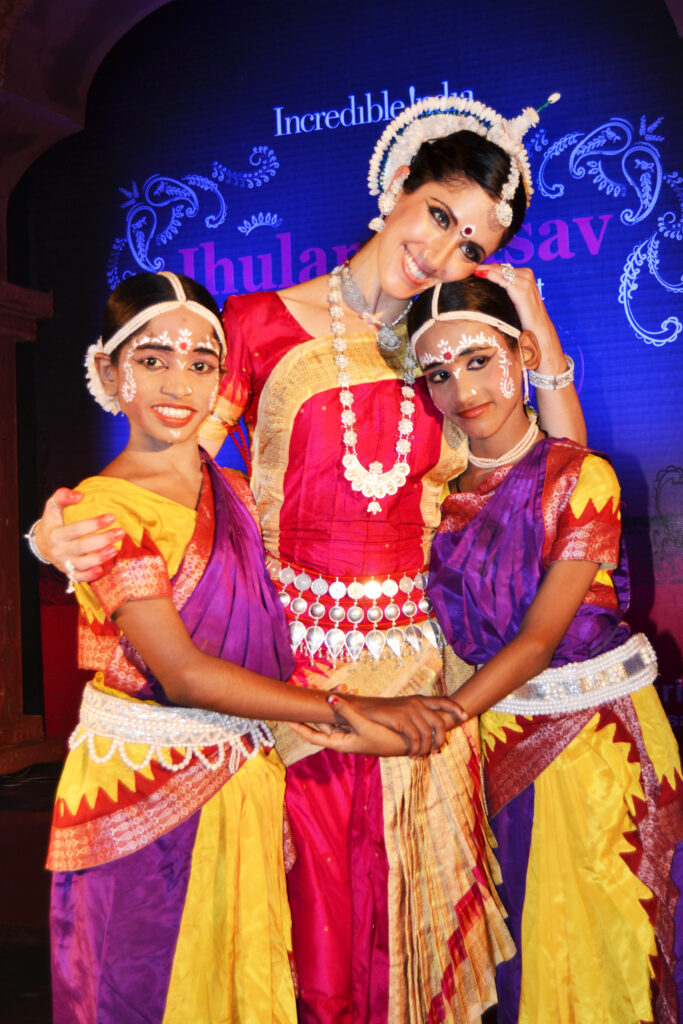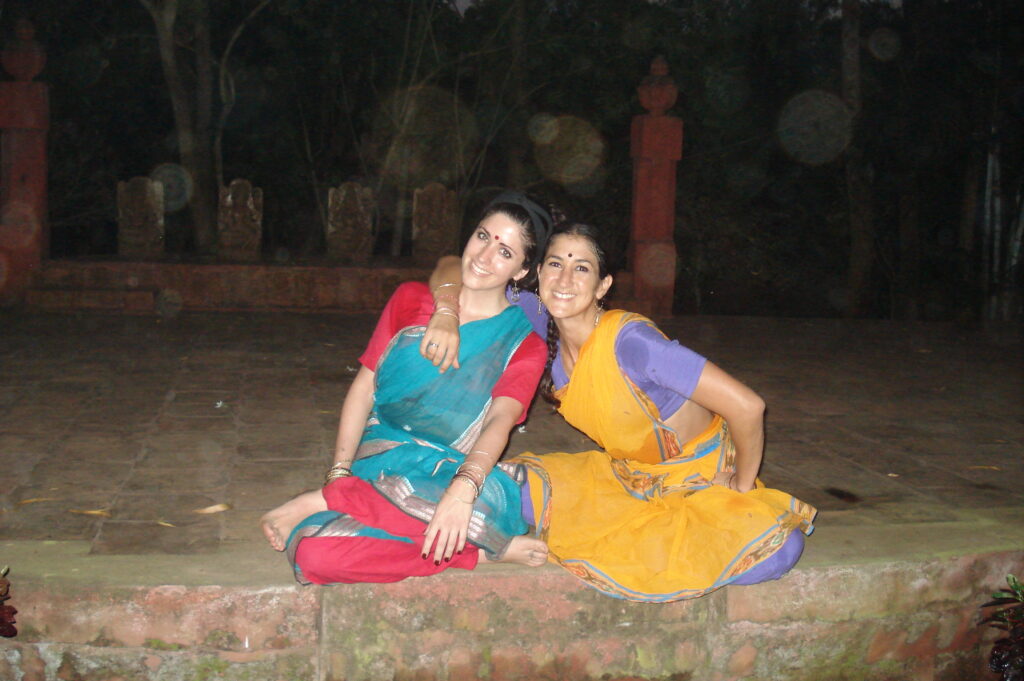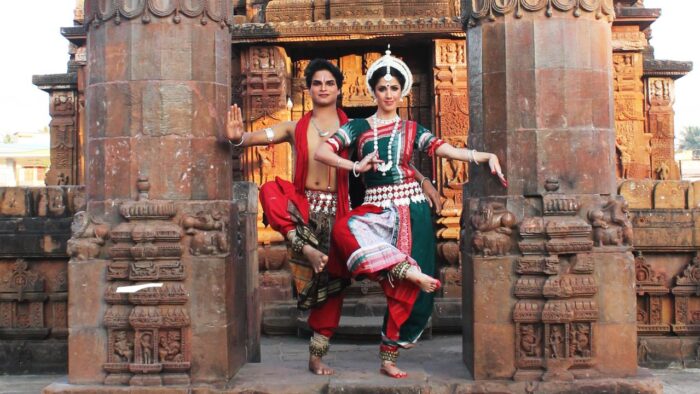At Güngur Barcelona, Patricia Salgado's main focus has been to promote Indian art primarily through teaching the Odissi dance, offering classical Indian music lessons led by the musical director of Güngur, Jordi Prats, and organizing workshops and performances for both Güngur dancers and Indian artists in general. With over 10 years of presence in Barcelona, they have become one of the major references for the dissemination of classical Indian arts in Southern Europe, says Patricia in this interview for the Center for Soft Power.
What are your earliest memories of seeking Indian culture.
Since childhood, we've had a very close connection with India. My mother, a psychologist, yoga instructor, and meditation enthusiast, introduced us to India from a very young age. I traveled to India with her when I was only 17, at a time when the internet didn't exist. That experience further deepened my connection with Indian culture, but on that trip, I didn't have the opportunity to encounter its dances.
I discovered classical Indian dance while still living in Argentina. My mother took us to a Kuchipudi demonstration by the dancer Ranga Vivekananda, who had recently arrived in the country from India. What was that? The costumes, makeup, jewelry, colors, hand movements, facial expressions, and the sounds of instruments... it was truly eye-opening. My sister and I immediately started studying with her.
I was already in love with India; I was finishing my degree in fashion design, I enjoyed painting, music, and art in general. That dance brought together everything I was passionate about. I often wonder... if I had discovered it a few years earlier, I highly doubt I would have completed my university degree.
Shortly after, I moved to Barcelona in search of work as a designer. During the first years in the city, I focused 100% on my work as a designer, traveling extensively, including to Asia, in search of materials, suppliers, and trends. By the age of 24, I was designing for major companies, leaving me with little time for anything else. After 2 or 3 years, my sister told me she was traveling to India to study Bharatanatyam and Kuchipudi. I took advantage of the few weeks of vacation my job allowed and escaped to visit her. When I arrived at the room where I'd be spending a few weeks accompanying my sister and taking a break from Barcelona's fast pace, I found a practice saree and a choli on the bed. I looked at her, and she said, "You have a class in 1 hour." From that moment on, I haven't stopped dancing.

Was it easy to find gurus and teachers in your city?
It wasn't easy. I had the experience of learning in India. I had tasted the quality, purity, and devotion of the teachers who had taught me. I searched desperately, but at that time, there was no one in Barcelona. No teacher or school where I could learn in the way I expected.
Together with my sister, we made the decision to return to India and continue our studies there. During that second trip, we decided to establish Güngur. In both cities, Barcelona and Buenos Aires. We wanted to bring to our cities what we had desired so much. A place where we could share and learn this unique art. And that's how Güngur was born.
Is it possible to understand the ethos and nature and purpose of Indian dance away from its natural setting
In my case, being closely connected to India from a young age, I always felt a special bond. India was my refuge, my passion. Dancing connects me to my deepest essence; I feel liberated, without necessarily feeling devout or rooted in religion.
However, after teaching this dance for 10 years, I realize the many reasons people are drawn to this dance here in the West. And it's fascinating. Because classical Indian dances are so rich in meaning, so complete, they attract people for their spiritual aspect, as many devotees of Krishna come forward. They attract for their technical side, as it's a comprehensive way to exercise our bodies. People are drawn for its theatrical side too, as telling stories and expressing oneself through mudras and facial gestures is unique and seldom seen in other artistic disciplines. Yoga practitioners are drawn as they appreciate the movements, mudras, and postures. Bollywood dancers and teachers are drawn to deepen and expand their knowledge to convey to their students. All these aspects coexist in the class and enrich in their own way. It's true that these dances don't have a very broad audience here. After the first year, typically only about 10% of students continue. But those who connect with this dance, continue till today.

What drew you to Indian dance. What made you choose Odissi in particular?
As I mentioned before, what initially drew me was its aesthetic aspect, Aharya abhinaya. But the moment I saw the movements and heard the music, I simply knew it was meant for me. From a young age, I listened to mantras, practiced yoga, read mythology, and painted Indian deities. However, I felt incomplete. When I saw Sujata Mohapatra perform Odissi, I knew I wanted to learn that style. I stopped learning Bharatanatyam and Kuchipudi and focused solely on Odissi. Its fluidity, subtle movements, music, and costumes captivated me. Design is my profession. Dancing Odissi is my passion. Sharing and transmitting it to others through Güngur is my mission.
Are there certain aspects of Indian dance you feel particular drawn to?
No, I'm drawn to all its aspects. Although I feel more comfortable with the technical side—practicing basic steps and repertoire of pure technique—I must say I increasingly enjoy attempting to express and connect with the more expressive part. I believe this is a challenge for all non-Indian dancers: to authentically connect and express. To convey our feelings through abhinaya, and to do so without acting or trying to imitate.

You have started your own space Gungur. What is its core activity?
At Güngur Barcelona, our main focus is to promote Indian art primarily through the following activities: teaching the Odissi style conducted by myself, offering classical Indian music lessons led by the musical director of Güngur, Jordi Prats, and organizing workshops and performances for both Güngur dancers and Indian artists in general. With over 10 years of presence in Barcelona, we have become one of the major references for the dissemination of classical Indian arts in Southern Europe.
Are Indian textiles popular in Hungary. What are the products you stock?
Not very much, unlike in Argentina where there's more demand and interest in textiles from India. However, our small brand, Bygünugr, offers not only garments made with hand-blockprinted fabrics, entirely handcrafted in India, but also a small collection of stretch cotton kurtas made in Barcelona with European fabric. These are designed for comfortable practice. It's challenging to find suitable attire for practicing these dances outside of India.

Your sister is a dancer too. Are there other family members interested in Indian art?
Our mother introduced us to this art, but my sister and I are the ones who have most deeply connected with Indian dance and art.
What is the biggest take away for you from Indian art?
For 10 consecutive years, I traveled to India during my vacations, specifically to Konark Natya Mandap in Konark. These were short yet intensely contrasting periods where I lived a completely different life from my routine in Barcelona, working as a designer. There, I didn't just learn Odissi; I interacted with the gotipuas who lived there. The experiences, the growth I underwent alongside them throughout those years, have been the greatest lessons I've received.





